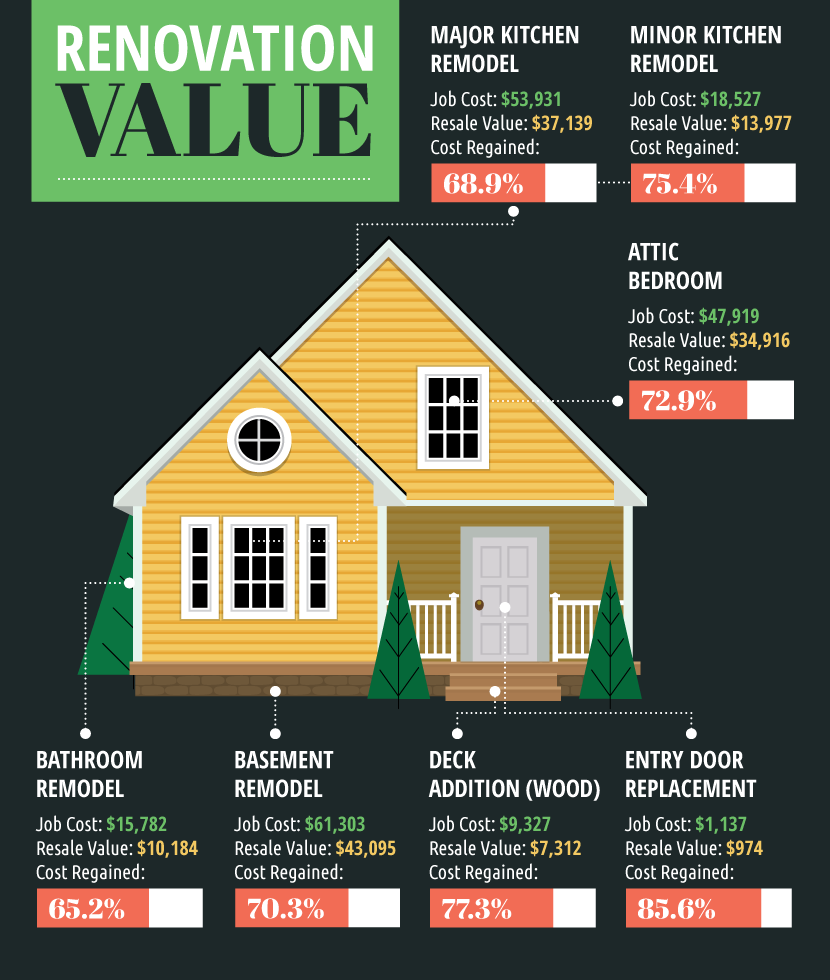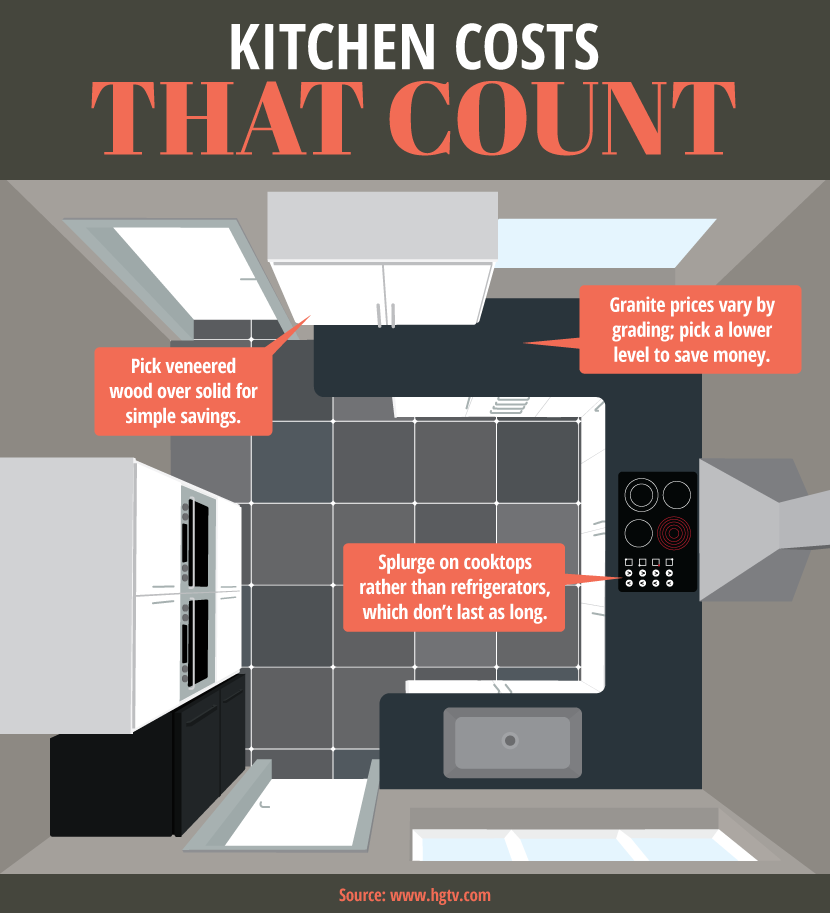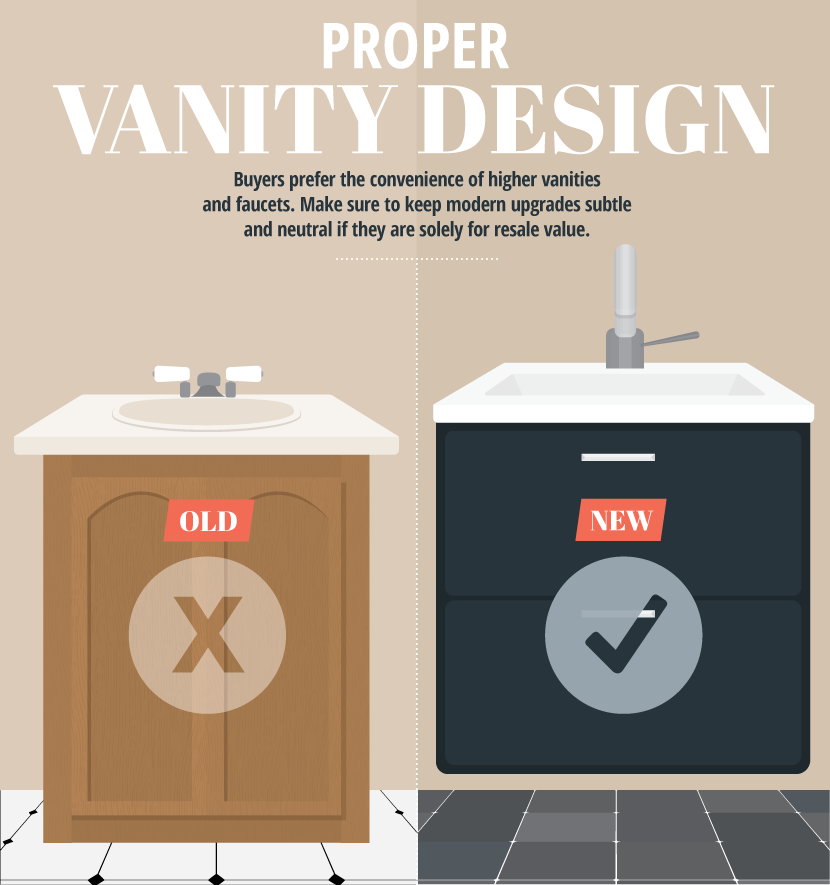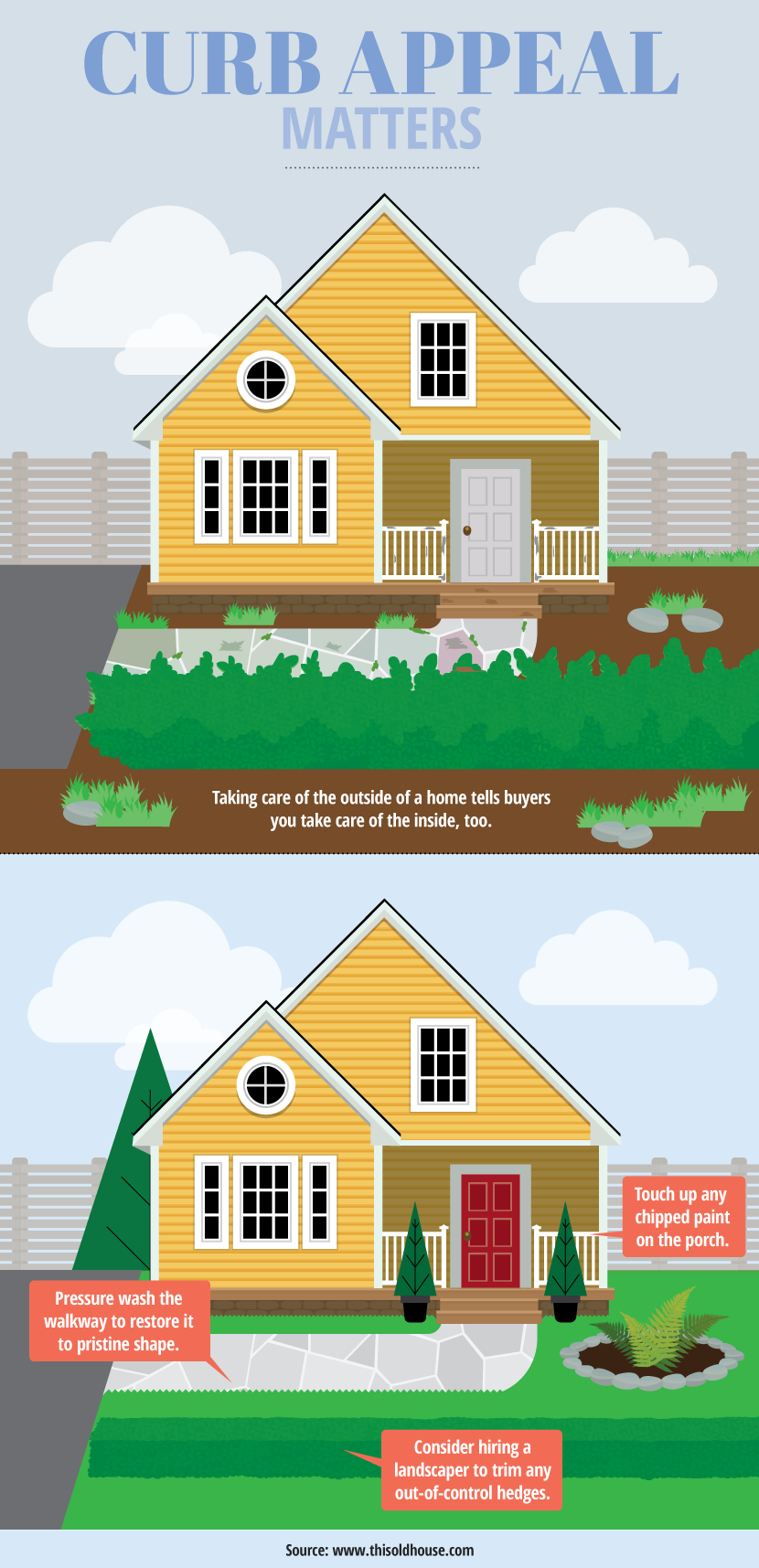Six Renovations that Actually Increase the Value of Your Home
Buying a fixer-upper home isn’t just about saving on upfront costs anymore; tons of people are rushing out and snagging up project homes on the cheap because it’s a great way to gain equity and it provides an opportunity to completely personalize the space.
Projects ranging from updating baseboards and paint colors to totally remodeling a kitchen and adding a room can all add value, but when it comes to renovation,
which upgrades really matter?
According to HGTV, “Home improvement projects cost about 20 to 25 cents on the dollar.
The other 75 to 80 cents spent go directly back into the home through increased value.”
These numbers don’t apply to every project though; here are the six renovations that actually add value to the home.

Kitchen
Because the kitchen is still considered the heart of the home, it’s the primary area where people seek value in a remodel.
When a buyer is walking through a prospective home, the kitchen is generally the first destination on their agenda because families still spend a lot of their time there.
A variety of renovation opportunities can increase the home’s value, with projects that work for any budget.
The easiest and most apparent upgrades in kitchens are for countertops and appliances; buyers almost always expect granite countertops in today’s housing market, and there are a number of alternatives to granite slab, such as granite tiles or soapstone, if slab simply isn’t an option.
Likewise, stainless-steel appliances add instant value because they won’t ever go out of style due to the neutral nature of their finished look.
A larger project to consider is custom-built, solid-wood cabinetry. If the current cabinets in your kitchen are outdated and made from materials such as melamine, buyers will likely see a project they will need to take on in the future.
Determine your budget and decide if extra features, such as glass cut-outs and soft-close hinges, are necessary for your renovation.
In addition, if you have a half or whole wall that breaks up the continuity of the floor plan, consider removing it to open up the space to the living area. Open floor plans are always in style, and they can make the space appear bigger.
Pro tip: If the half wall makes sense or you don’t want to do that kind of demolition, consider turning it into a usable bar space instead.

Bathroom
The second most important area for buyers is the bathrooms. Bathrooms are often an obvious target for renovations because they provide value easily without requiring extensive costs.
Simply cleaning the space or updating it with a fresh coat of semi-gloss paint and some new grout can make a difference,
so there you really have no reason not to consider customizing it.
For more involved renovations, buyers want to see updated vanities, tile or stone features and flooring, and floating glass or walk-in showers if the space can accommodate them.
Be sure to keep at least one bathtub in the house; families with children require them for bath time.
If a shower–bath combo fixture is the only thing that fits, accent it with unique shower curtains that fit the style of the home.
Pro tip: If you can’t find a shower curtain pattern that fits your style or color scheme, consider looking for a company that makes custom curtains and pick something from their selection.
Just make sure you get an inner lining large enough to keep water off the fabric.

Flooring
The floors of a house are another area that catch buyers’ eyes because they take up most of the space. Outdated tiles or dingy carpeting, wood that needs refinishing, or noticeable vinyl flooring are likely to be noticed – and red-flagged in a buyer’s mind –
as something they’ll have to update after purchasing the home.
Simple updates to important rooms can make a big difference in creating a sense of value.
Depending on your budget and style, you can choose from multiple ways to renovate floors. If wood flooring is the best fit for an area, options range from new or refurbished solid wood to engineered hardwood,
which looks similar to solid wood but holds up better with time.
The same goes for carpet, the pricing for which varies depending on the materials and thickness of padding you choose.
Pro tip: If you already have solid wood floors but they’re scratched or look lackluster, try refinishing them before you consider a total replacement.
Add a Room
The general rule of thumb for real estate is that more rooms equal more value for a home. However, adding a room doesn’t always require large construction projects and adding a completely new room;
there might be extra spaces already existing in your home that you can convert to a new living space.
If you have a den, office, attic, or basement, you can complete the space by adding a closet and call it a bedroom. For example, if you have an unfinished attic space, you can put up some drywall, paint,
and add a closet and some finishing touches to create a new master bedroom.
Be careful with basements though; these projects are generally greater in scale, and you may not gain the same return on your investment.
Pro tip: If you don’t have any extra rooms you can convert into an additional bedroom, create the illusion of space by opening up the area with the right features and décor.
HGTV suggests that homeowners “replace heavy closed draperies with vertical blinds or shutters to let light in – a sunny room feels larger and more open.”
Ridding the space of oversized items and clutter will make it appear more open, creating the sense that it’s bigger than it actually is.
The Bones
If the structural components of your home aren’t in good condition, your value will plummet. An appraiser will mark off major value points if anything is out of order, and buyers are likely to be scared off by a house that isn’t in certified working order.
It’s a potential hazard to their health and safety, and the renovation project will be their responsibility after they purchase the home. In addition, if the inspector marks these areas on their checklist,
you may have to fix the issues before the buyer agrees to close or risk legally disclosing the issues publicly in the future.
Because it’s still a buyer’s market, anything that’s not in the best isn’t likely to garner the same attention. For resale purposes, it’s critical that you have everything in working order.
Realistically, everything already should be; you shouldn’t be living somewhere with faulty structuring, and neither should a future owner.
Pro tip: If you find issues with the home and have to replace structural pieces, consider going with an eco-friendly option; buyers are becoming conscious of the trend, and it saves money and reduces waste in the long run.
Check out New Home Source’s review of green building features to determine which ones will add the most value to your home.
Curb Appeal
A real estate book is always judged by its cover; before a buyer can see any of the high-value upgrades you’ve made to the interior of your home, they have to like its exterior.
If the outside space isn’t updated and clean, potential buyers may not ever step inside.
Simply put, if it looks like you don’t care about the outside of the home, it’s going to seem like you don’t care about the inside, either.
Updating your home’s curb appeal can as simple as cleaning things up a bit and keeping vegetation from getting overgrown and unkempt, or it can be as large and dramatic as replacing the lawn and xeriscaping with native, drought-ready plants.

Your home’s exterior is equally as important as your yard; fresh paint and clean windows can go a long way, and installing a new statement door is a guaranteed booster. If the outside looks organized and taken care of,
buyers will have a sense of care and value –
even if you invested minimal amounts of time and money.
If you have the space for a deck or porch, adding one is almost a guarantee that you will get your money back in the form of increased value.
It’s important to have some sort of shaded structure that protects the front door – especially in areas with heavy weather and sun – so adding anything to a bare front will help.
Manicured backyards are always a plus for buyers, even if they won’t use them. During an appearance on This Old House, John Veneris, regional vice president of the National Association of Realtors in Downer Grove, Illinois, said,
“People get back dollar for dollar for the decks they put in.” Regardless of your climate or the style of your home, decks and porches are features worth adding.
Runner Up:
Realtors are often split on lighting renovation projects in terms of their added value; some say buyers love seeing built-in recess lighting and updated fixtures,
but others claim that doing anything more than adding a dimmer to current lights is a wasted effort because buyers will probably customize the features anyway.
Time Sensitive:
In the current real estate market, open floor plans are hot; if you want to sell soon, look for areas in your home where you can remove walls that aren’t load-bearing or take out clunky kitchen islands that don’t add to the room’s appeal.
Buyers want a wide-open floor plan, and doing some of the work yourself isn’t likely to set you back too much.
Additional Tip:
Do your best to keep the value of the home in the same range as the other homes in the neighborhood; at first glance, it might seem like a good thing to out-value surrounding homes,
but buyers are often wary of a house that’s too valuable to match its surroundings because it seems out of place.
If the resell value is the only reason you’re renovating, it’s a good idea to conform to certain guidelines for each area of your home. If the changes are just for you and you’re only thinking about your selling ability in the future,
I say have some fun and do it your way. Styles will always change, and if you love the updates now, they won’t represent wasted effort.
Embed the article on your site

